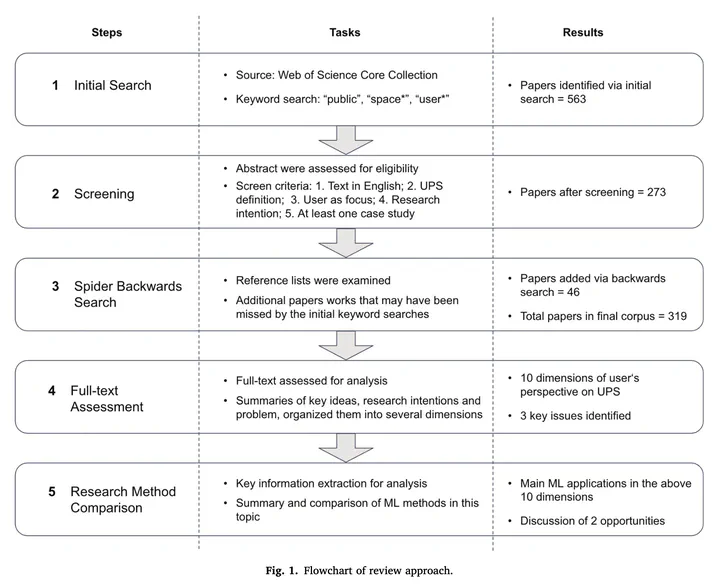Understanding the user perspective on urban public spaces: A systematic review and opportunities for machine learning

Abstract
With people-centered approaches gaining prominence in urban development, studying urban public spaces from the users perspective has become crucial for effective urban design, planning, and policy-making. The rapid advancement of Machine Learning (ML) techniques has enhanced the ability to analyze and understand user data in urban public spaces, such as usage patterns, activities, and public opinions. However, limited efforts have been made on a structured understanding of urban public spaces from the users perspective. These knowledge gaps have also hindered the full realization of MLs potential in describing and analyzing urban public spaces. After systematically reviewing 319 relevant papers, this study analyzes ten dimensions of the users perspective on urban public spaces and identifies three unaddressed issues: (1) interpretation of users perception, (2) overlooked user demographics, and (3) data acquisition. In addition, this review also examines the applications of ML to these dimensions and their potential to tackle the three issues, and highlights two main opportunities to integrate ML for more rigorous and data-driven public spaces studies: (1) combining Computer Vision and Natural Language Processing in public spaces quality measurement and (2) investing in high-quality user data.